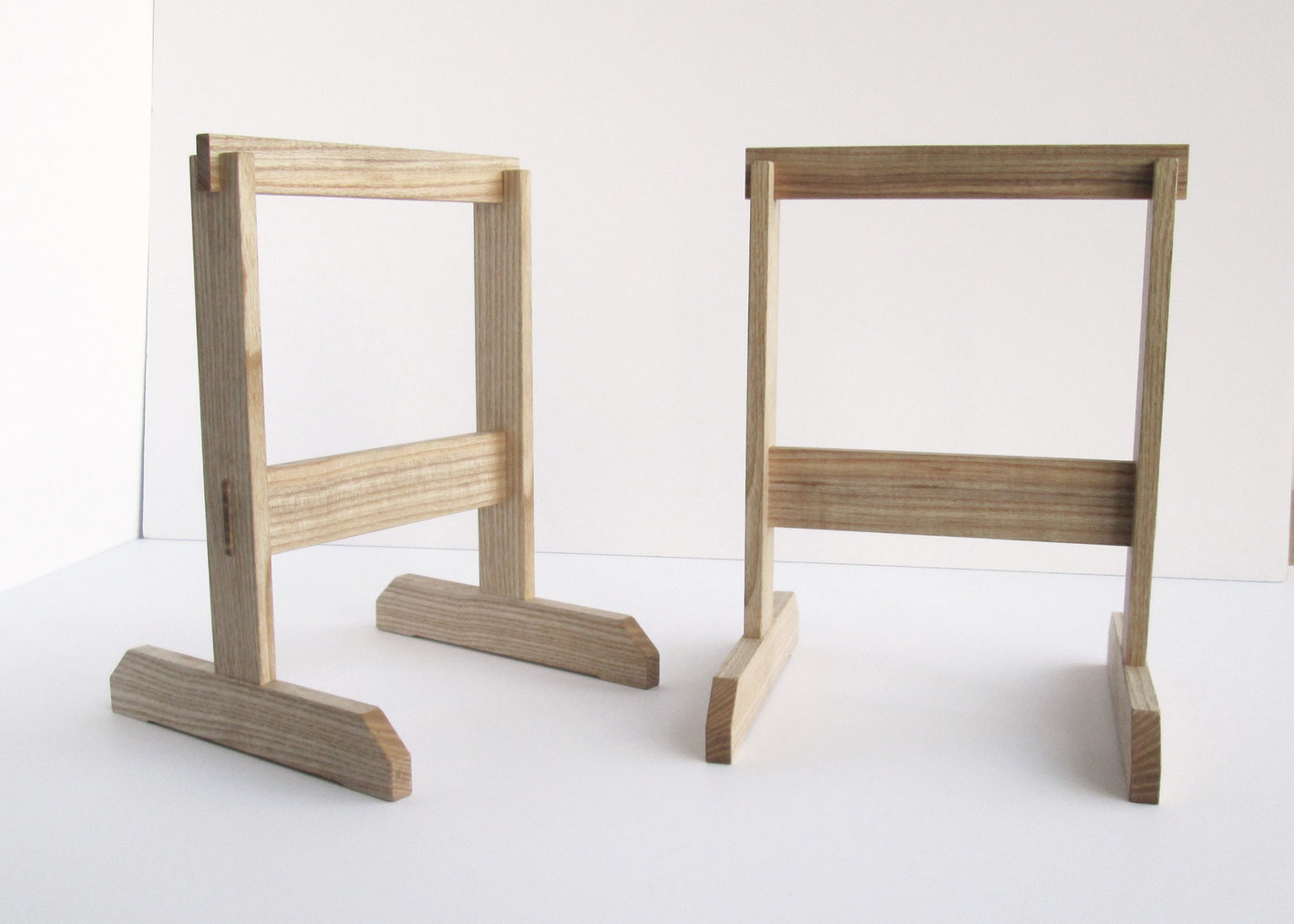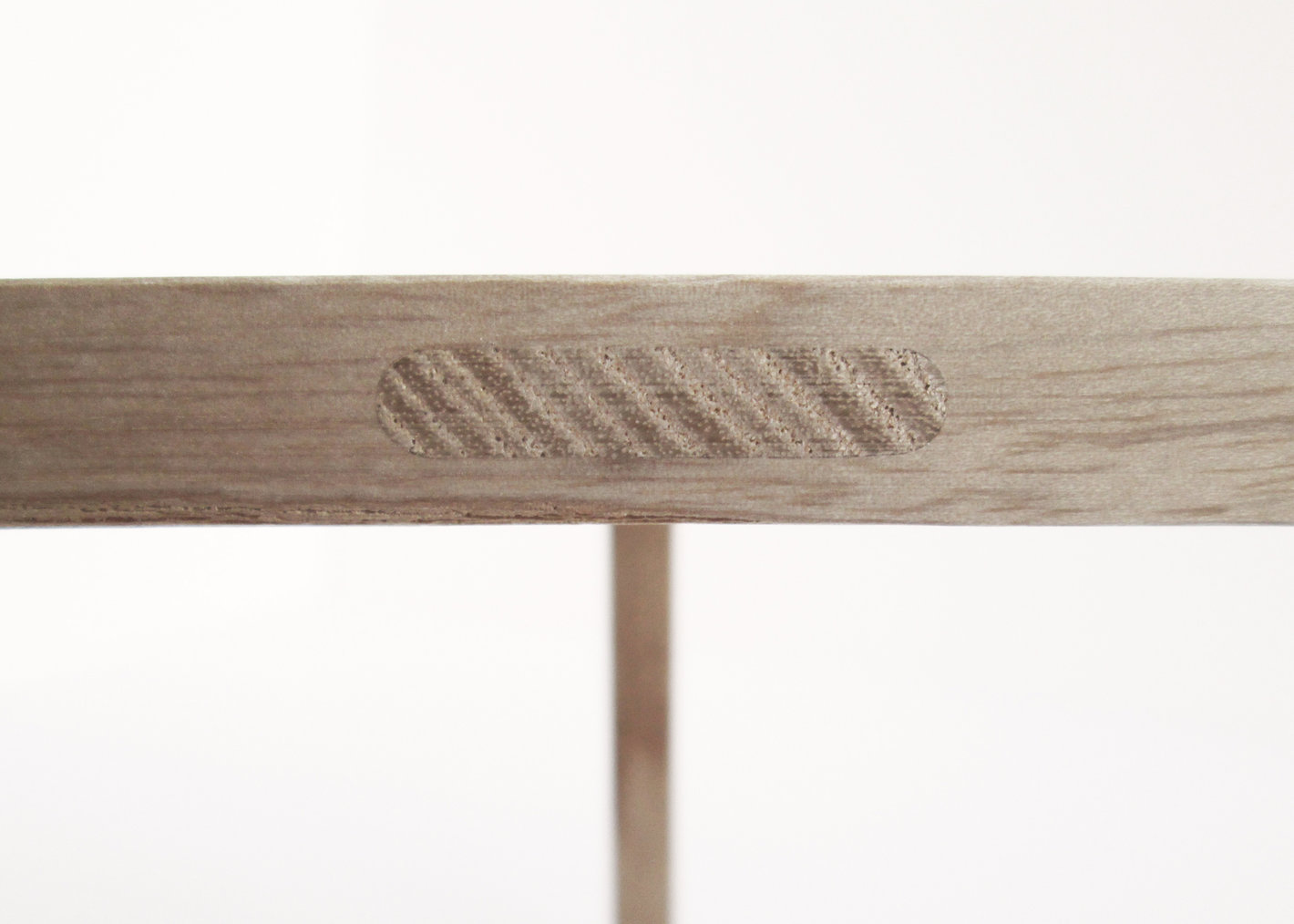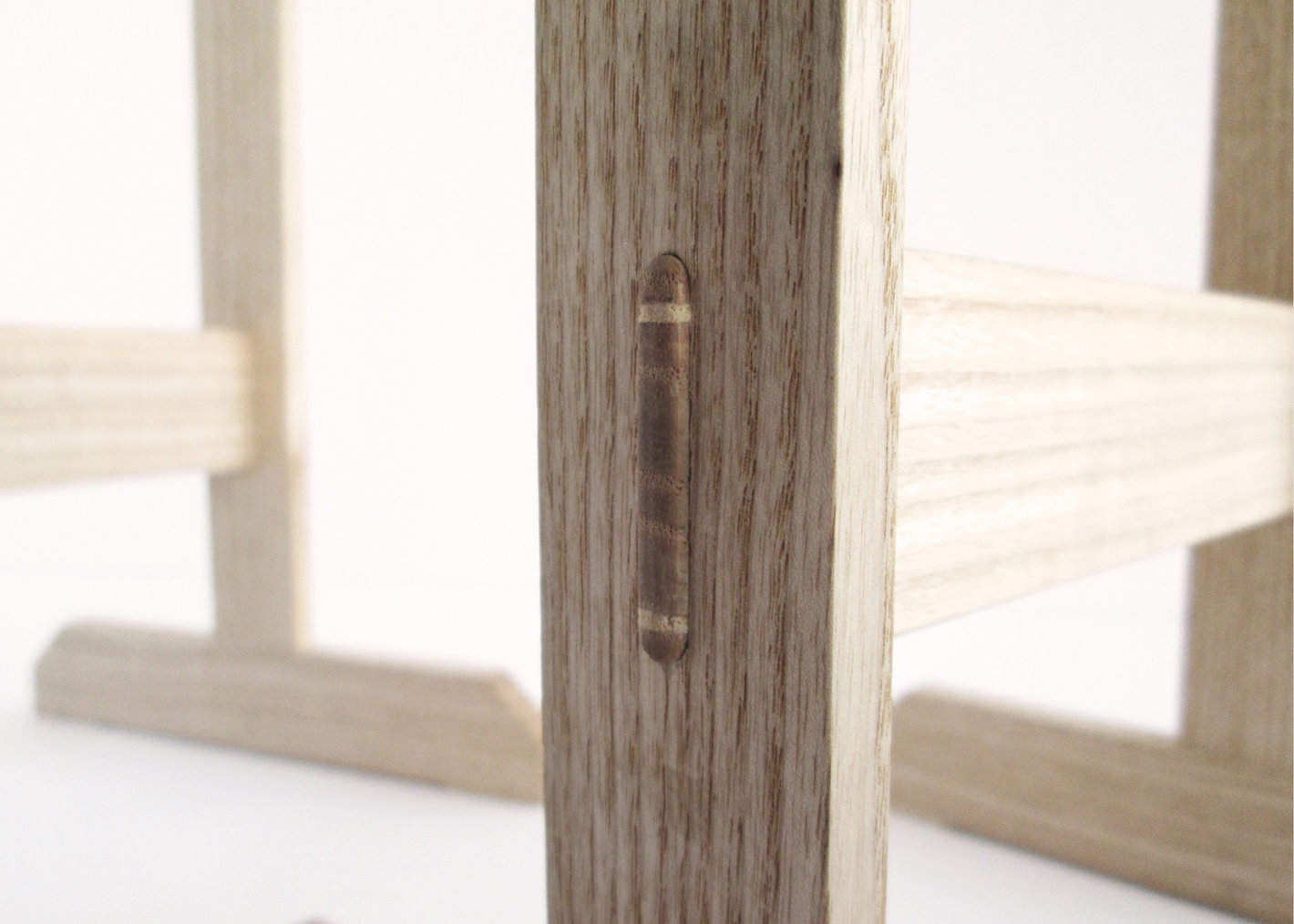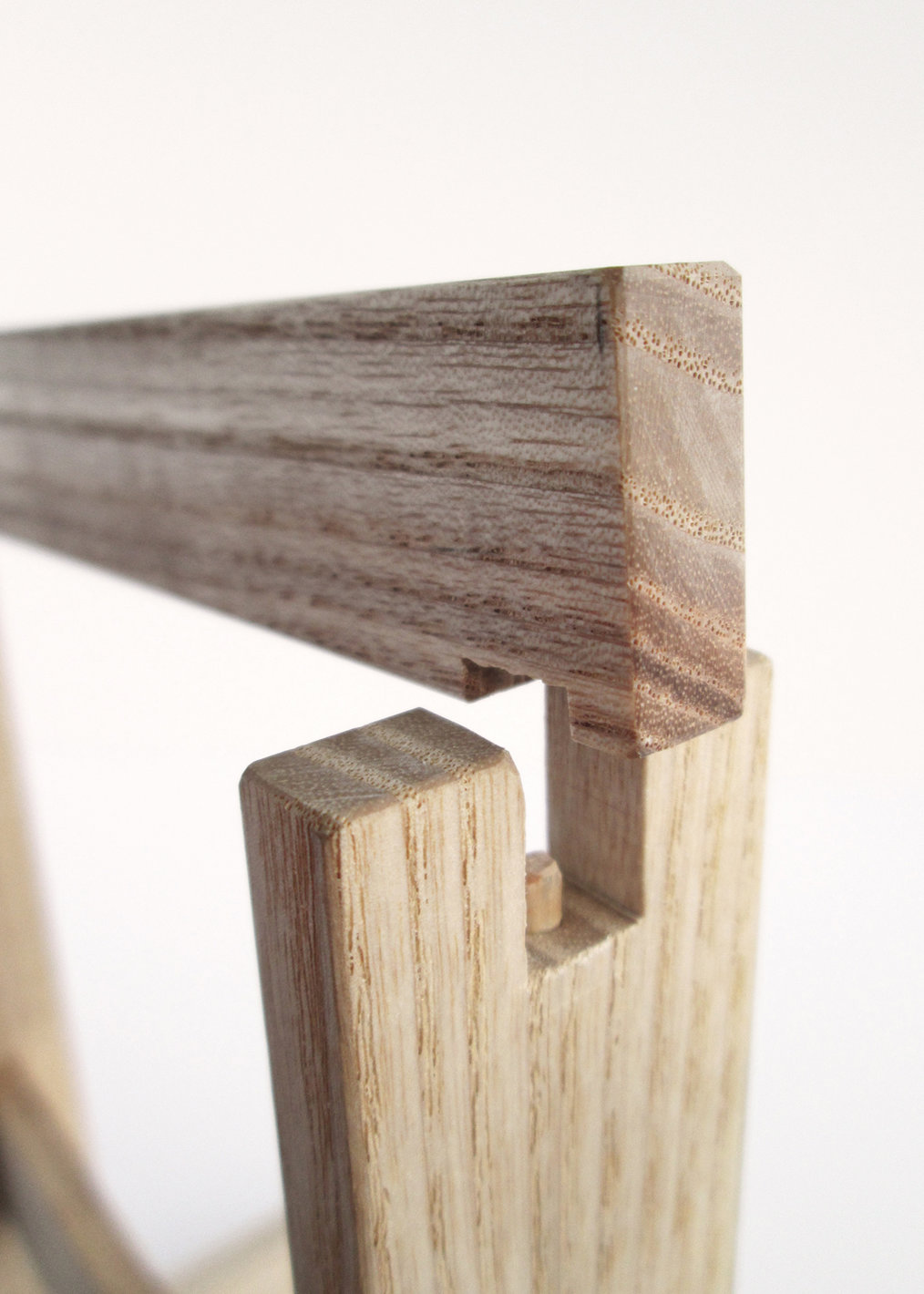Tabletop Sawhorses

Materials:
Ash.
Process:
- Mill stock for feet, legs, top rail and stretcher.
- Remove material for mortise in feet and legs with mortising table.
- Remove material for tenons in legs and stretcher with table saw and band saw and fit to mortises with file and chisel.
- Remove material with band saw to create slot in top of legs for top rail. Clean up with chisel.
- Drill holes for dowels in slot in top of legs.
- Ease edges and create final surface quality on legs and feet with block plane.
- Glue legs of sawhorses into feet.
- Using the shaping table remove material from center of feet to minimize contact with the ground which adds stability.
- Cut slots in tenons of stretchers with hand saw for wedges.
- Assemble stretchers and legs by applying glue to the tenons as well as the tips of the wedges before hammering them into place.
- Remove extra material of wedges with hand saw.
- Shape and ease edges of protruding tenon.
- Transfer dowel centers from top of legs to top rails.
- Drill holes for dowels in top rail.
- Insert dowels into legs and set the top rail in place pushing the dowels into both sets of holes.
- Remove material from top rail so that it can interlock with slot in legs.



